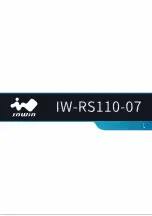
1-4
Cisco ASA Series CLI Configuration Guide
Chapter 1 Configuring Cisco Unified Presence
Information About Cisco Unified Presence
http://www.cisco.com/en/US/products/ps6837/products_installation_and_configuration_guides_list.ht
ml
Trust Relationship in the Presence Federation
Within an enterprise, setting up a trust relationship is achievable by using self-signed certificates or you
can set it up on an internal CA.
Establishing a trust relationship cross enterprises or across administrative domains is key for federation.
Cross enterprises you must use a trusted third-party CA (such as, VeriSign). The ASA obtains a
certificate with the FQDN of the Cisco UP (certificate impersonation).
For the TLS handshake, the two entities could validate the peer certificate via a certificate chain to
trusted third-party certificate authorities. Both entities enroll with the CAs. The ASA as the TLS proxy
must be trusted by both entities. The ASA is always associated with one of the enterprises. Within that
enterprise (Enterprise X in
), the entity and the ASA could authenticate each other via a local
CA, or by using self-signed certificates.
To establish a trusted relationship between the ASA and the remote entity (Entity Y), the ASA can enroll
with the CA on behalf of Entity X (Cisco UP). In the enrollment request, the Entity X identity (domain
name) is used.
shows the way to establish the trust relationship. The ASA enrolls with the third party CA by
using the Cisco UP FQDN as if the ASA is the Cisco UP.
Figure 1-3
How the Security Appliance Represents Cisco Unified Presence – Certificate Impersonate
271639
Internet
Access
Proxy
LCS/OCS
Director
Inspected and
Modified
(if needed)
Certificate
Authority
Certificate
Certificate with
Private Key
ASA
Cisco
UP
Enroll with FQDN
of Cisco
UP
Microsoft Presence Server
Key 1
Key 2
TLS (Self-signed,
or from local CA)
TLS (Cisco UP Certificate)
3rd Party CA
Summary of Contents for 5505 - ASA Firewall Edition Bundle
Page 28: ...Glossary GL 24 Cisco ASA Series CLI Configuration Guide ...
Page 61: ...P A R T 1 Getting Started with the ASA ...
Page 62: ......
Page 219: ...P A R T 2 Configuring High Availability and Scalability ...
Page 220: ......
Page 403: ...P A R T 2 Configuring Interfaces ...
Page 404: ......
Page 499: ...P A R T 2 Configuring Basic Settings ...
Page 500: ......
Page 533: ...P A R T 2 Configuring Objects and Access Lists ...
Page 534: ......
Page 601: ...P A R T 2 Configuring IP Routing ...
Page 602: ......
Page 745: ...P A R T 2 Configuring Network Address Translation ...
Page 746: ......
Page 845: ...P A R T 2 Configuring AAA Servers and the Local Database ...
Page 846: ......
Page 981: ...P A R T 2 Configuring Access Control ...
Page 982: ......
Page 1061: ...P A R T 2 Configuring Service Policies Using the Modular Policy Framework ...
Page 1062: ......
Page 1093: ...P A R T 2 Configuring Application Inspection ...
Page 1094: ......
Page 1191: ...P A R T 2 Configuring Unified Communications ...
Page 1192: ......
Page 1333: ...P A R T 2 Configuring Connection Settings and QoS ...
Page 1334: ......
Page 1379: ...P A R T 2 Configuring Advanced Network Protection ...
Page 1380: ......
Page 1475: ...P A R T 2 Configuring Modules ...
Page 1476: ......
Page 1549: ...P A R T 2 Configuring VPN ...
Page 1550: ......
Page 1965: ...P A R T 2 Configuring Logging SNMP and Smart Call Home ...
Page 1966: ......
Page 2059: ...P A R T 2 System Administration ...
Page 2060: ......
Page 2098: ...1 8 Cisco ASA Series CLI Configuration Guide Chapter 1 Troubleshooting Viewing the Coredump ...
Page 2099: ...P A R T 2 Reference ...
Page 2100: ......











































